Display
As always, every smartphone reviewed has to go through our CalMAN 5 workflow to determine accuracy of calibration. I have to applaud LG for fixing their issues with the G2’s uneven saturation sweep, as it’s gone in the G Pro 2. However, it seems that LG is still missing the targets for the sweep, especially on the secondary colors.
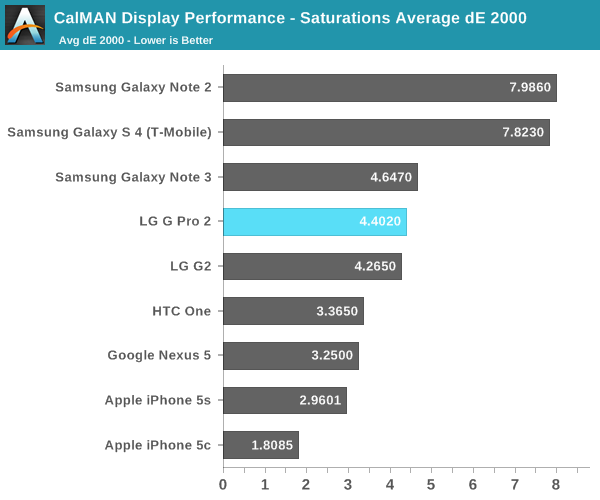
The white point is also quite blue, likely because this phone is intended for the Asian market, although I don’t know if things will change if this phone makes it to Western markets.
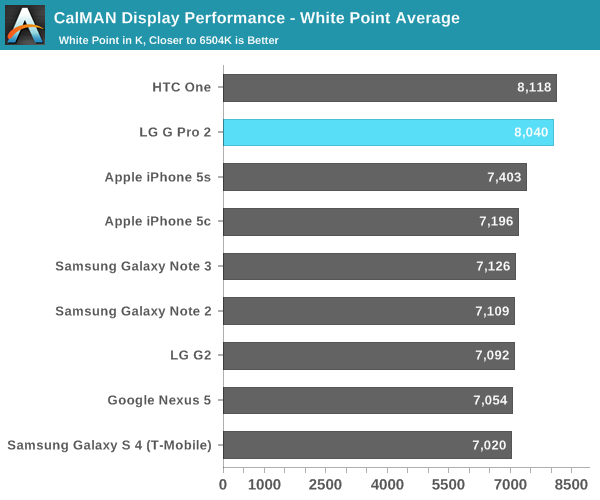
Overall, the G Pro 2 doesn’t really rock the boat when it comes to color accuracy, although LG seems to be taking the right steps to rectify some of the issues that they’ve had. The Gretag Macbeth chart performance improves a bit as well.
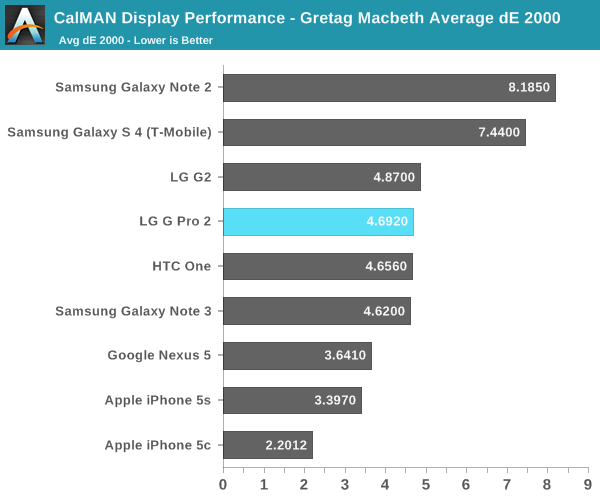
It’s important to keep in mind for the grayscale data that I use an i1pro, which means that the extremely low brightness values are likely to be inaccurate, so I’m not posting official contrast numbers for the G Pro 2 quite yet.
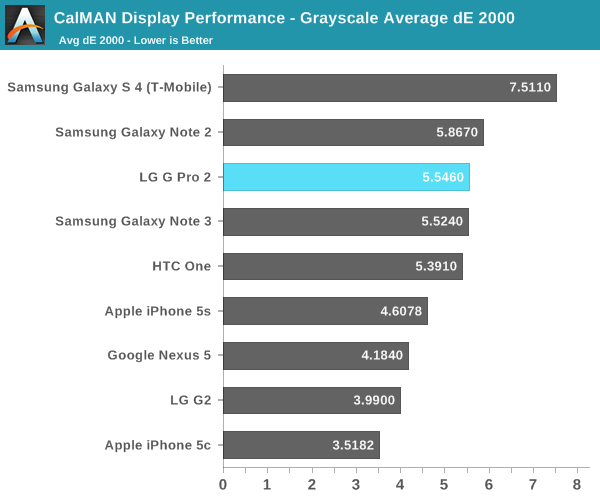
Brightness seems to be relatively low at maximum relative to the best LCDs at 400 nits or so, but it’s in line with the LG G2. The minimum white level is 7.63 nits for those that use their phones in dark environs, so this certainly makes it easier on the eyes than the HTC One, which goes down to around 12 nits at the lowest brightness.

I’ll be sure to update this review with additional information, as time constraints dictate that I can’t quite get all the data collected to do a proper comparison across multiple phones for minimum 100% APL brightness.
Camera
I must defer to Brian in this case, as the camera is effectively unchanged from the LG G2. There is the OIS+ feature, and LG has added a few extra features such as 4K recording, flash for the front facing camera, and a natural flash feature that tries to emulate a dual temperature LED flash without the dual temperature LED. The OIS+ feature definitely works, and it’s effectively EIS on top of the OIS. Compared to the G2, I can definitely see a difference, although I don’t have a camera rig to show the effect. What doesn’t quite work out is the natural flash feature, which despite its best efforts, doesn’t seem to noticeably reduce the change in color balance that happens when flash is used. As seen below, I took the first photo with the flash off, and the second with the flash on.
One of the simplest features is the front facing camera flash, which is actually a great idea despite its simplicity and makes an enormous difference when it comes to low light photos with the front facing camera.
The Magic Focus feature also works, but like most HDR modes, it needs still subjects to work right. Otherwise it's pretty easy to end up with severe ghosting. The UI also only lets you refocus once, which is a bit disappointing.


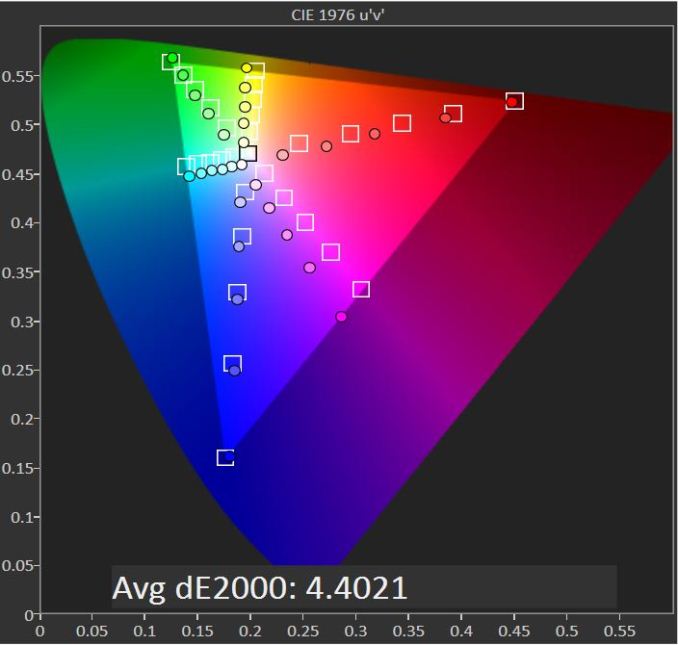
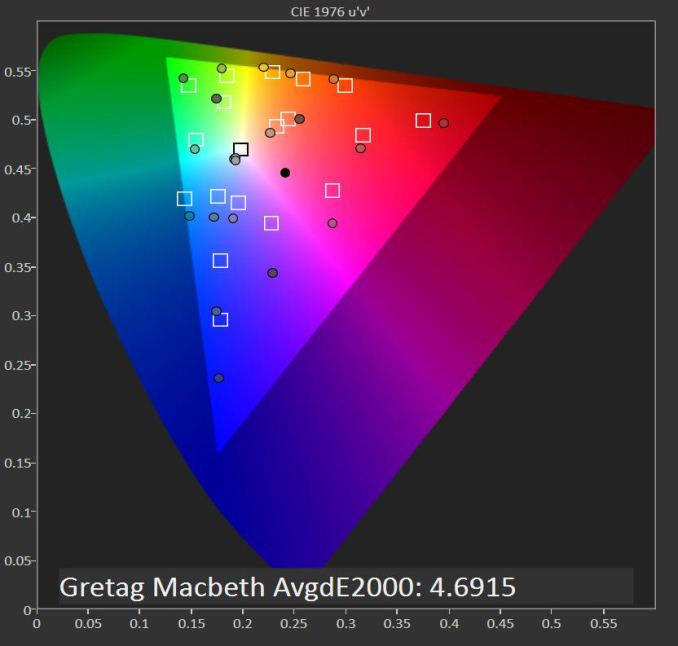
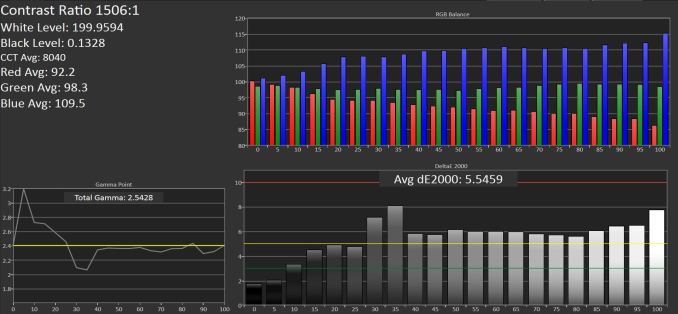
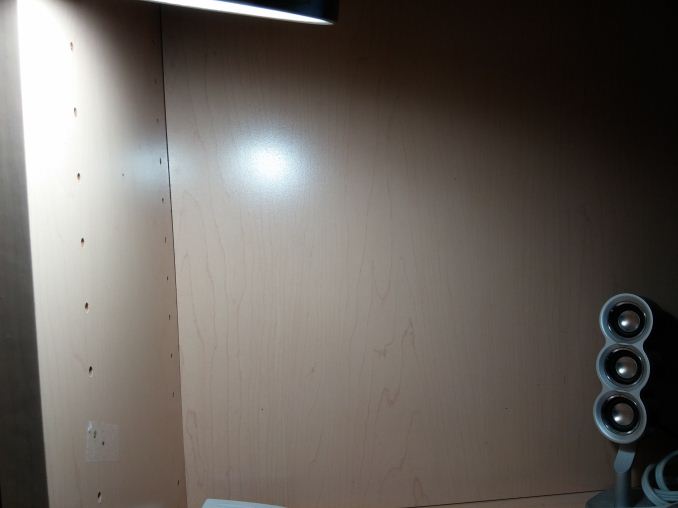
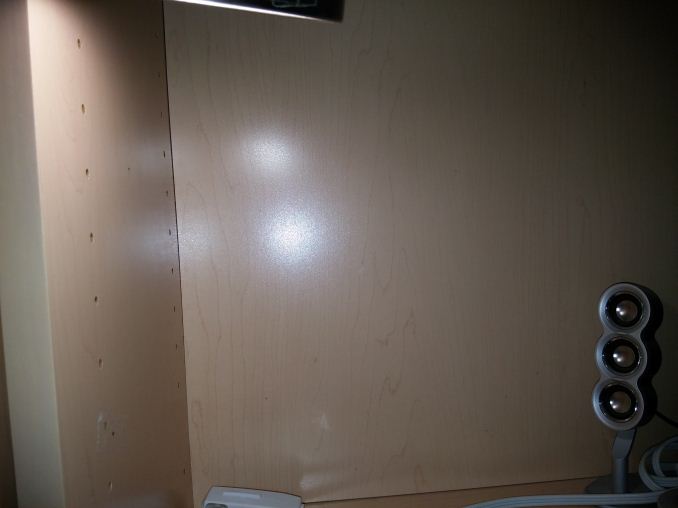
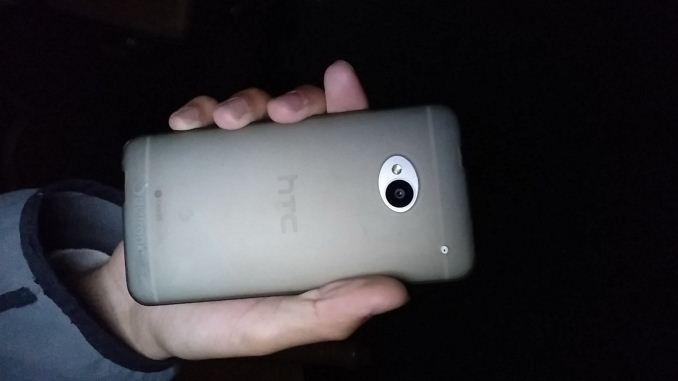









63 Comments
View All Comments
JoshHo - Tuesday, March 4, 2014 - link
I apologize in advance for the poor product photos, I don't actually have a dSLR of my own so the Lumia 1020 was the closest thing I could get.Gunbuster - Tuesday, March 4, 2014 - link
"Korean OEMs may be shifting their visual styles soon."I would hope so. Those screens look terribly dated.
ddriver - Tuesday, March 4, 2014 - link
And people complained touchwiz was bad... What's with the "windows 3.1" styling LOLnoel_newell - Friday, October 3, 2014 - link
I agree, it does. I can't see how this phone can match up to some of the top phones on the market (at http://www.consumertop.com/best-phone-guide/ for example).dawheat - Tuesday, March 4, 2014 - link
Nice mini review though I'd ask for a couple additions:- screen reflectance - I've found that not all LCDs are the same and combined with max brightness gives an overall idea of outside legibility
- more direct comparison to its competitors - I think most users in this segment will wonder whether to get the Note 3 or LG Pro 2. So is the better camera worth the digitizer/pen? Being 6 months after the Note 3, is anything else noticeably better hardware wise?
JoshHo - Tuesday, March 4, 2014 - link
Unfortunately I don't have the equipment to test reflectance, I really would like to test that as well when it comes to screen protectors and such.I personally can't say which is better. If the pen is of secondary concern then the G Pro 2 is probably a more well-rounded phone.
TrackSmart - Tuesday, March 4, 2014 - link
Thanks for the "mini review"!As a heads-up:
I've read the entire article, but I still don't know how "KnockCode" works or what it does (a small oversight). I'll be googling it momentarily, but it might be worth adding just a few words on this for future readers.
JoshHo - Wednesday, March 5, 2014 - link
Thanks for the input, I'm going to make sure to cover that in the follow-up.ddriver - Tuesday, March 4, 2014 - link
Looks like LG stopped one feature short of copying the note 3 completely. "Note" hardware without a stylus to compliment it = fail. I love the s-pen, wouldn't go back to a pen-less device ever.kmmatney - Wednesday, March 5, 2014 - link
It's pretty much a poor man's Note 3. I was planning on buying a Note 3, but it was $300 for 16GB, while the LG Optimus Pro G was $99 for 32 GB (and the rest of the specs were on par). Since this was my first foray into using a larger phone, I figured I would get the cheaper model. At least if I break it, I'm not out so much money - at least that was my thinking. If you don't use the pen, this is a cheaper option.